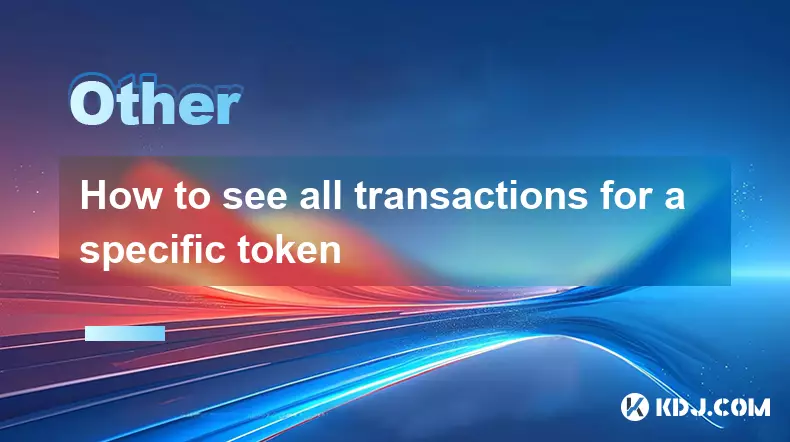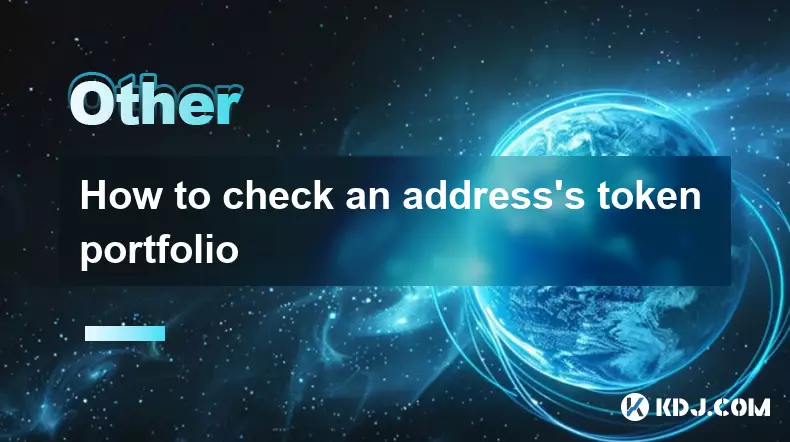-
 bitcoin
bitcoin $115849.501581 USD
-0.20% -
 ethereum
ethereum $4657.446044 USD
-1.30% -
 xrp
xrp $3.094289 USD
-0.74% -
 tether
tether $1.000313 USD
-0.03% -
 solana
solana $243.548889 USD
0.20% -
 bnb
bnb $930.722647 USD
0.20% -
 usd-coin
usd-coin $0.999696 USD
-0.01% -
 dogecoin
dogecoin $0.283551 USD
1.29% -
 tron
tron $0.349632 USD
-0.77% -
 cardano
cardano $0.915982 USD
-1.94% -
 hyperliquid
hyperliquid $54.899464 USD
-0.88% -
 chainlink
chainlink $24.718086 USD
-1.68% -
 ethena-usde
ethena-usde $1.001078 USD
-0.02% -
 sui
sui $3.756062 USD
0.14% -
 stellar
stellar $0.399024 USD
-1.87%
What are the smart contract vulnerabilities of blockchain? How to prevent them?
Smart contracts on blockchain platforms like Ethereum can be vulnerable to attacks like reentrancy and integer overflow, but using best practices can mitigate these risks.
Apr 29, 2025 at 08:42 am

Smart contracts, the self-executing pieces of code on blockchain platforms like Ethereum, have revolutionized the way transactions and agreements are handled in the cryptocurrency world. However, with their increasing adoption, the vulnerabilities in these smart contracts have come under scrutiny. Understanding these vulnerabilities and learning how to prevent them is crucial for developers and users alike.
Common Smart Contract Vulnerabilities
Smart contract vulnerabilities can lead to significant financial losses and undermine the trust in blockchain technology. Here are some of the most common vulnerabilities:
Reentrancy Attacks: This occurs when a contract calls an external contract before resolving its own state. An attacker can repeatedly call back into the original contract before the first invocation of the function is finished, potentially draining funds.
Integer Overflow and Underflow: Smart contracts often use integer types to handle numerical values. If these values exceed their maximum or minimum limits, they can wrap around, leading to unexpected behaviors or vulnerabilities.
Timestamp Dependence: Some smart contracts rely on block timestamps for critical functions. Miners can manipulate these timestamps within a certain range, which can be exploited to influence the outcome of a contract.
Front-Running Attacks: In public blockchains, transactions are visible before they are mined. An attacker can see a pending transaction and submit a similar transaction with a higher gas price to be mined first, affecting the original transaction's outcome.
Unchecked External Calls: When a smart contract interacts with another contract or external system, it may not check if the call was successful, leading to potential vulnerabilities if the external call fails.
Preventing Reentrancy Attacks
Reentrancy attacks are among the most dangerous vulnerabilities in smart contracts. To prevent these attacks, developers can follow these best practices:
Use the Checks-Effects-Interactions Pattern: This pattern ensures that all state changes are made before any external calls are executed. By updating the state first, you prevent the possibility of reentrancy.
- Implement checks to validate the conditions of the transaction.
- Apply the effects of the transaction to the contract's state.
- Make any external calls after the state changes are complete.
Implement a Mutex Lock: A mutex (mutual exclusion) lock can prevent reentrancy by ensuring that only one function can execute at a time.
- Use a state variable to track whether a function is currently executing.
- Before entering a function, check if the lock is available. If not, revert the transaction.
- Set the lock to true at the beginning of the function and reset it to false at the end.
Preventing Integer Overflow and Underflow
Integer overflow and underflow can be mitigated through the following methods:
Use SafeMath Library: The SafeMath library in Solidity provides functions that check for overflows and underflows, reverting the transaction if such a condition is detected.
- Import the SafeMath library into your contract.
- Replace standard arithmetic operations with SafeMath functions like
add,sub,mul, anddiv.
Utilize Solidity Version 0.8.0 and Above: Starting from version 0.8.0, Solidity includes built-in checks for arithmetic overflows and underflows, making the use of SafeMath unnecessary.
- Specify the Solidity version in your contract as
^0.8.0or higher. - Use standard arithmetic operations without worrying about overflows and underflows.
- Specify the Solidity version in your contract as
Mitigating Timestamp Dependence
To reduce the risks associated with timestamp dependence, consider these strategies:
Use Block Number Instead of Timestamp: Block numbers are more predictable and less susceptible to manipulation than timestamps.
- Replace
block.timestampwithblock.numberin your contract logic. - Calculate time-based conditions using an average block time and the block number.
- Replace
Implement a Time Buffer: Add a buffer to any time-sensitive operations to account for potential timestamp manipulation.
- Define a time buffer in your contract, such as 15 minutes.
- Add this buffer to any time-based checks to ensure a margin of safety.
Preventing Front-Running Attacks
Front-running can be challenging to prevent, but these approaches can help:
Use Commit-Reveal Schemes: This scheme involves committing to a value before revealing it, making it difficult for attackers to front-run.
- In the first transaction, commit a hash of the value you want to use.
- In a subsequent transaction, reveal the value and verify it against the committed hash.
Implement a Randomization Mechanism: Use cryptographic randomness to make it harder for attackers to predict the outcome of transactions.
- Use a verifiable random function (VRF) to generate random numbers.
- Incorporate these random numbers into your contract logic to reduce predictability.
Avoiding Unchecked External Calls
To prevent issues with unchecked external calls, follow these guidelines:
Use the Require Statement: The
requirestatement in Solidity can be used to check the success of external calls.- After making an external call, use
requireto ensure the call was successful. - Example:
require(address(this).call(data), 'External call failed');
- After making an external call, use
Implement Try-Catch Blocks: Solidity version 0.6.0 and above supports try-catch blocks, which can be used to handle external call failures gracefully.
- Wrap external calls in a try-catch block to handle potential failures.
- Use the catch block to revert the transaction or handle the failure appropriately.
FAQs
Q: Can smart contract vulnerabilities be completely eliminated?A: While it's impossible to completely eliminate vulnerabilities, following best practices and conducting thorough audits can significantly reduce the risk.
Q: How often should smart contracts be audited?A: Smart contracts should be audited at least once before deployment. For critical contracts, regular audits and updates may be necessary to address new vulnerabilities.
Q: Are there tools available to help detect smart contract vulnerabilities?A: Yes, several tools like Mythril, Slither, and Oyente can help detect common vulnerabilities in smart contracts. These tools should be used in conjunction with manual code reviews.
Q: What should I do if I find a vulnerability in a deployed smart contract?A: If you find a vulnerability, report it to the contract's developers immediately. If the vulnerability is severe, consider informing the broader community to prevent exploitation.
Disclaimer:info@kdj.com
The information provided is not trading advice. kdj.com does not assume any responsibility for any investments made based on the information provided in this article. Cryptocurrencies are highly volatile and it is highly recommended that you invest with caution after thorough research!
If you believe that the content used on this website infringes your copyright, please contact us immediately (info@kdj.com) and we will delete it promptly.
- Dogecoin's Viral Rise: Is an ETF the Next Moonshot?
- 2025-09-14 18:25:12
- Solana, Galaxy, and Rallies: Decoding the Crypto Buzz
- 2025-09-14 18:25:12
- Coinbase, Jacobi Capital, and Share Buys: What's the Buzz?
- 2025-09-14 18:30:11
- SEI Price: Analyst Predicts a Potential 10x Move – Is $2-$5 Realistic?
- 2025-09-14 18:30:11
- Decoding SUI: Setups, Breakouts, and Bullish Signals in the Crypto Sea
- 2025-09-14 18:45:14
- Sui Koers, Momentum Finance & Ecosystem: A Deep Dive Into Sui's Ascent
- 2025-09-14 18:35:12
Related knowledge

How to check if an address is a smart contract
Sep 07,2025 at 08:54am
Understanding Smart Contracts and Wallet Addresses1. Blockchain networks like Ethereum differentiate between externally owned accounts (EOAs) and cont...

How to see the source code of a smart contract
Sep 13,2025 at 02:36pm
Understanding Smart Contract Source Code Accessibility1. Smart contracts deployed on public blockchains like Ethereum are inherently transparent. Once...

How to see all transactions for a specific token
Sep 05,2025 at 08:36am
Understanding Token Transactions on the Blockchain1. Every token transaction on a blockchain is recorded as part of a public ledger, making it accessi...

How to check an address's token portfolio
Sep 10,2025 at 03:18am
Using Blockchain Explorers to Analyze Token Holdings1. Navigate to a blockchain explorer such as Etherscan for Ethereum-based addresses or BscScan for...

How to find the block height of a transaction
Sep 04,2025 at 08:37pm
Understanding Block Height in Blockchain Transactions1. Block height refers to the number of blocks that have been confirmed on the blockchain since i...

How to track staked assets on a block explorer
Sep 05,2025 at 04:18am
Understanding Staked Assets on the Blockchain1. Staked assets refer to cryptocurrency tokens locked in a smart contract or validator node to support n...

How to check if an address is a smart contract
Sep 07,2025 at 08:54am
Understanding Smart Contracts and Wallet Addresses1. Blockchain networks like Ethereum differentiate between externally owned accounts (EOAs) and cont...

How to see the source code of a smart contract
Sep 13,2025 at 02:36pm
Understanding Smart Contract Source Code Accessibility1. Smart contracts deployed on public blockchains like Ethereum are inherently transparent. Once...

How to see all transactions for a specific token
Sep 05,2025 at 08:36am
Understanding Token Transactions on the Blockchain1. Every token transaction on a blockchain is recorded as part of a public ledger, making it accessi...

How to check an address's token portfolio
Sep 10,2025 at 03:18am
Using Blockchain Explorers to Analyze Token Holdings1. Navigate to a blockchain explorer such as Etherscan for Ethereum-based addresses or BscScan for...

How to find the block height of a transaction
Sep 04,2025 at 08:37pm
Understanding Block Height in Blockchain Transactions1. Block height refers to the number of blocks that have been confirmed on the blockchain since i...

How to track staked assets on a block explorer
Sep 05,2025 at 04:18am
Understanding Staked Assets on the Blockchain1. Staked assets refer to cryptocurrency tokens locked in a smart contract or validator node to support n...
See all articles










































































